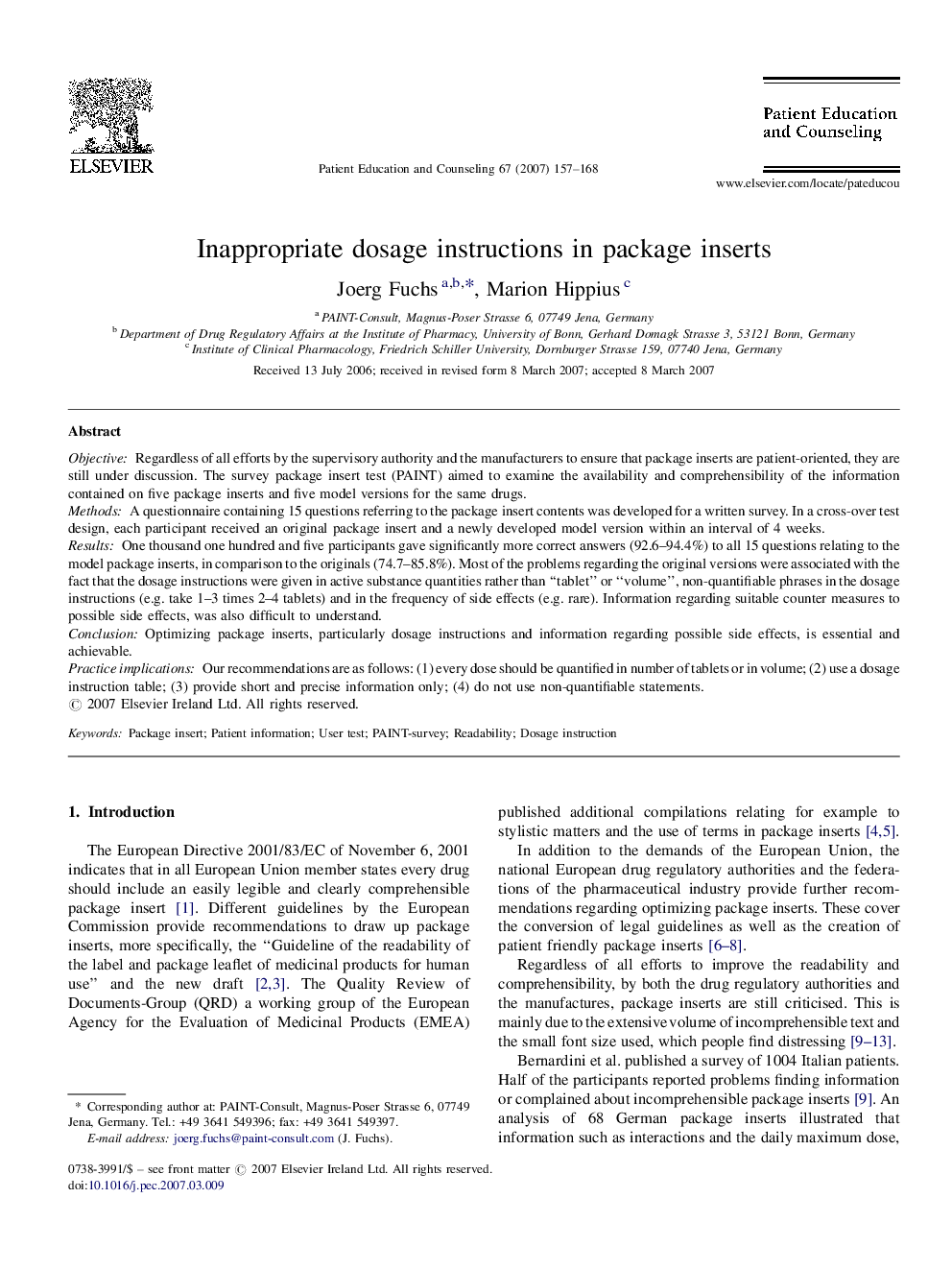| Article ID | Journal | Published Year | Pages | File Type |
|---|---|---|---|---|
| 3816041 | Patient Education and Counseling | 2007 | 12 Pages |
ObjectiveRegardless of all efforts by the supervisory authority and the manufacturers to ensure that package inserts are patient-oriented, they are still under discussion. The survey package insert test (PAINT) aimed to examine the availability and comprehensibility of the information contained on five package inserts and five model versions for the same drugs.MethodsA questionnaire containing 15 questions referring to the package insert contents was developed for a written survey. In a cross-over test design, each participant received an original package insert and a newly developed model version within an interval of 4 weeks.ResultsOne thousand one hundred and five participants gave significantly more correct answers (92.6–94.4%) to all 15 questions relating to the model package inserts, in comparison to the originals (74.7–85.8%). Most of the problems regarding the original versions were associated with the fact that the dosage instructions were given in active substance quantities rather than “tablet” or “volume”, non-quantifiable phrases in the dosage instructions (e.g. take 1–3 times 2–4 tablets) and in the frequency of side effects (e.g. rare). Information regarding suitable counter measures to possible side effects, was also difficult to understand.ConclusionOptimizing package inserts, particularly dosage instructions and information regarding possible side effects, is essential and achievable.Practice implicationsOur recommendations are as follows: (1) every dose should be quantified in number of tablets or in volume; (2) use a dosage instruction table; (3) provide short and precise information only; (4) do not use non-quantifiable statements.
